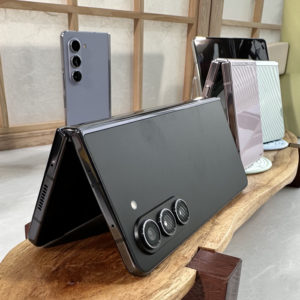Prabhu Ram, Head – Industry Intelligence Group
In today’s digitally connected world, broadband access is the cornerstone of nearly every connected experience within our homes. The landscape of home networking is undergoing a rapid and transformative evolution, driven by several pivotal trends. Among these trends, three trends stand out as particularly influential.
First, there is the proliferation of connected devices within our homes. In the not-so-distant past, a typical household required internet connectivity for a handful of devices like computers, gaming consoles, and smartphones. However, today’s homes are grappling with an ever-expanding array of connected devices.
Secondly, there is an escalating demand for internet speed driven by Over-the-Top (OTT) media streaming, with the transition to 4K and the future promise of 8K content adding to the burden. Additionally, the growth of high-resolution video calls, livestreaming platforms, High-Definition (HD) audio, online and cloud gaming, and Virtual Reality (VR) further intensifies the need for high-speed internet. For instance, just streaming 4K content to a single VR headset may require over 2 Gigabits per Second (Gbps) of bandwidth. The appetite for high-speed internet is not just driven by entertainment but is also fueled by the demands of remote work, online learning, and immersive technologies.
Thirdly, the COVID-19 pandemic accelerated the shift towards hybrid working models and remote learning, contributing an increased reliance on collaborative workspace platforms. Users now expect high-quality, reliable, and low-latency video calls and real-time collaboration tools. Ensuring seamless and consistent connectivity throughout the home, without any dead spots or weak coverage, has become a paramount concern for both consumers and businesses in the era of hybrid work. Collectively, these trends have and will continue to place additional demands on home networks. The pandemic catalyzed the importance of robust home networks to sustain work and education, making the quality of broadband services more critical than ever before.
In the context of these evolving trends, Wi-Fi technology has become a pivotal component of our daily lives. In fact, the majority of internet traffic within homes today is managed by Wi-Fi. While Ethernet played a central role in the past, Wi-Fi performance has now reached a level of competitiveness with this legacy technology. Moreover, Wi-Fi is cost-effective and ideally suited to provide connectivity for the growing number of wireless devices that populate modern households. Cellular connectivity, which predominantly serves mobile devices, plays a minor role in home networking. Most cellular traffic is automatically transferred to Wi-Fi when users are at home. Simultaneously, consumers’ reliance on Wi-Fi continues to grow, in tandem with the broader integration of Wi-Fi connectivity into an expanding range of devices, including smart TVs and household electronics like refrigerators.
Wi-Fi 7 and Its Significance
Wi-Fi’s ubiquity in home networking has transformed it into the central conduit for connectivity, raising the bar for its capabilities in the modern home. Wi-Fi 7 plays a pivotal role in delivering seamless, high-speed, and low-latency connectivity to an ever-expanding array of devices within our homes.

Qualcomm’s 10G Fiber Gateway Platform
Building upon its leadership in 5G Fixed Wireless Access (FWA) and Wi-Fi 7, Qualcomm has introduced the Qualcomm 10G Fiber Gateway Platform to redefine home networking in three fundamental ways.
Qualcomm’s innovative approach seeks to leverage the potential of next-generation technology to meet the evolving demands of home networking. The platform not only introduces Fiber access to Qualcomm’s technology portfolio but also redefines the broadband gateway as a user-centered services platform.

Qualcomm’s Approach
Next-Gen 10G Fiber Access Technology with Wi-Fi 7 Connectivity
Qualcomm’s platform integrates cutting-edge 10G Passive Optical Network (PON) broadband access technology with advanced Wi-Fi 7 features. This combination ensures the seamless delivery of high-speed, low-latency fiber broadband throughout the home. Key components include Qualcomm Multi-Link Mesh technology for superior mesh performance and Qualcomm Automated Frequency Coordination (AFC) Solution to maximize 6GHz spectrum operation. The platform supports interoperability with leading operator Optical Line Terminal (OLT) solutions and offers architecture flexibility to adapt to unique operator needs and deployment types. Its scalability allows carriers to deploy new offerings quickly and enables OEMs to offer diverse product portfolios.
By focusing on state-of-the-art technology, Qualcomm’s platform provides the foundation for a robust and future-proof home networking ecosystem.

A User Experience-First Approach with Qualcomm Service Defined Wi-Fi Technology:
Qualcomm’s Service Defined Wi-Fi technology takes a user-centric approach to connectivity. It prioritizes application-centric user experiences by understanding and responding to the unique profiles of user applications and services. Real-time connectivity optimizations ensure smooth operation even during network congestion, interference, and variable user demands. This technology enhances performance for all devices in the home, regardless of their generation and type. It empowers broadband service providers to orchestrate their services seamlessly, from the cloud to the device, ensuring consistently optimized wireless performance, even on legacy devices and in congested networks.
By putting user experience at the forefront, Qualcomm’s technology not only boosts performance but also ensures adaptability in dynamic home networking environments.
A Developer-First Approach to Broadband Gateway Services and Innovation:
Qualcomm’s goal in developing the 10G Fiber Gateway Platform is to provide service providers and developers with the tools needed to drive service innovation in the home. The platform offers full programmability through open APIs, comprehensive support for leading middleware ecosystems, open-source platform OS, and powerful onboard processing. These features streamline development and accelerate the deployment of differentiated services and value-added applications, enabled through a unique Software Defined data path programmed through Qualcomm Service Defined Wi-Fi. This approach unlocks new opportunities for service providers to engage with subscribers, personalize services, increase service assurance, and enhance user experiences.
By fostering innovation, Qualcomm’s platform not only benefits service providers but also opens up new possibilities for customized services and enhanced user satisfaction.
Conclusion
In conclusion, Qualcomm’s 10G Fiber Gateway Platform represents a significant leap forward in home networking technology.
Looking ahead, the platform’s impact on the future of home networking and user experiences is poised to be transformative.
Built from the ground up to revolutionize home gateways, it combines superior connectivity via Fiber and Wi-Fi, a software-defined architecture for service innovation, and exceptional user experiences through Qualcomm Service Defined Wi-Fi.
As the industry continues to evolve, the ripple effects of Qualcomm’s innovations will extend to reshape the broader landscape of home networking.
With the Qualcomm 10G Fiber Gateway Platform, broadband service providers can deliver adaptive and personalized services, improve operational efficiency, and enhance customer satisfaction. As the industry continues to evolve, Qualcomm Technologies is at the forefront, redefining the broadband gateway as a user-centered services platform, thus reshaping the future of broadband experiences for users worldwide.
The platform’s pioneering solutions are not just meeting today’s demands but also paving the way for the future of connected homes, where seamless, high-speed, and user-centric broadband services will continue to play a central role.
Disclosure: Qualcomm Technologies flew me out to their headquarters at San Diego to attend their WiFi7 Day, covering my hotel and flights.













